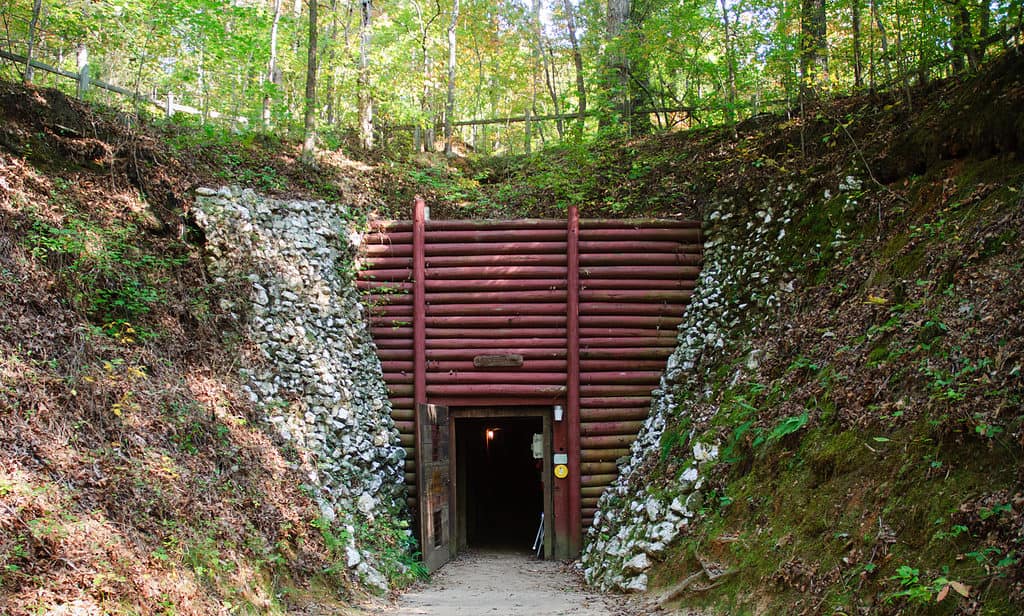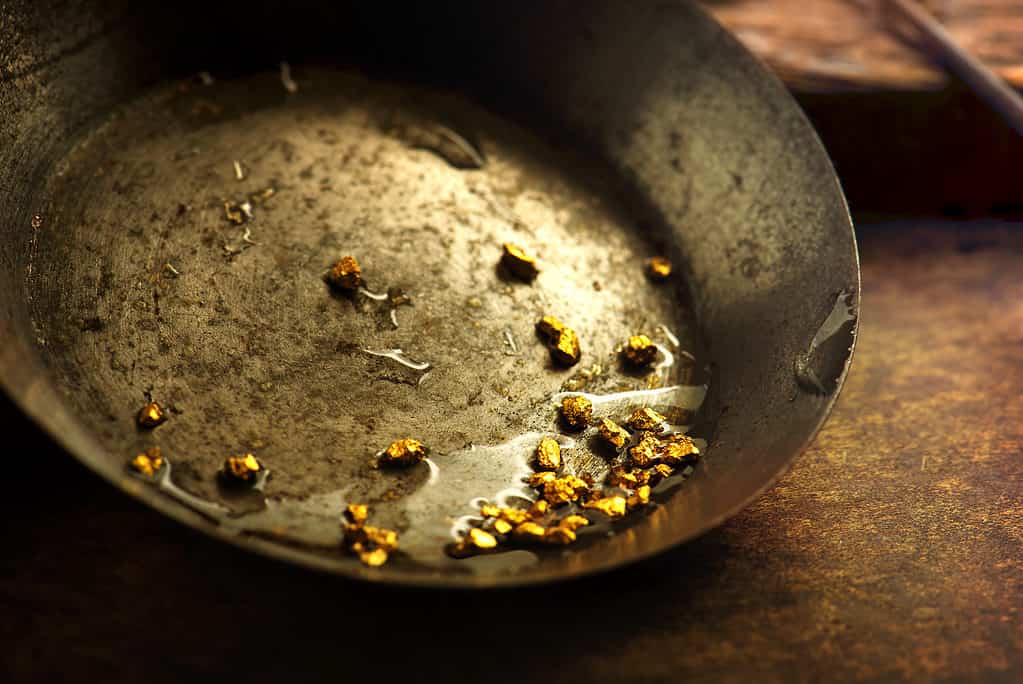Finding gold, of any size, is an incredible feat, like finding a needle in a mountain-sized haystack. The hunger for gold has driven many fortune-seekers to rush to remote mountains and rivers in search of this precious yellow mineral. It was first discovered at the Reed Mine in North Carolina in 1799. The hunt for gold has been active in the United States ever since. Western states, including Oregon, have turned out to be the country’s biggest gold producers. Discover when and where Oregon’s largest gold nugget was found and what it would be worth today. Learn how you and your family can pan for gold on your next trip to Oregon.

Reed Gold Mine in North Carolina is the location of the first recorded gold find in the United States, in 1799.
©Zack Frank/Shutterstock.com
Where is Gold Usually Found?
Geologically, gold is most often in igneous rock formations of quartz. It may also be where magma has forced its way into softer rock formations. Gold formed in these rocks is referred to as “lode” gold, and these may form gold “veins.” Wind and water then erode the rocks. As chips or flakes of gold are forced away, they are pushed down the mountains and into rivers and streams. Here, the heavy gold settles down – hopefully to be discovered later! This gold is known as “placer” gold. Placer gold can indicate to prospectors that there are sources of lode gold further upstream. In this way, they can know the most productive places to search.

Gold ore is often found in quartz formations.
©Mironov56/Shutterstock.com
The Rush for Gold in Oregon
In 1851, prospectors discovered gold in Southern Oregon in and around the Rogue River. This set off a stampede of fortune- and adventure-seekers from back east. A few years later, more rivers revealed flakes and nuggets, bringing even more people to the area. These included miners, of course, but also shopkeepers, farmers, and anyone else who wanted to seek a fortune. Mining towns sprang up overnight and turned into ghost towns just as quickly when the gold dried up.
Quite a few large-sized gold nuggets have been found in Oregon. One is the Armstrong Nugget. George Armstrong and Dick Stewart discovered it in 1913. This nugget weighs around 80 ounces and is on display today in Baker City, Oregon. By weight, it is worth over $150,000 today! This is the biggest gold nugget from Oregon that still exists.
However, Mattie Collins discovered the largest gold nugget in Oregon in 1859. She discovered it along Althouse Creek. It weighed a whopping 204 ounces! This gold nugget was appropriately called the Collins Nugget. That weight of gold today, at $1880 an ounce, would fetch over $383,000! What would you do with that kind of money?

Finding the largest gold nugget in Oregon is every prospector’s dream.
©Roman Bodnarchuk/Shutterstock.com
Searching for Gold in Oregon
With approximately 6 million ounces of gold discovered so far in Oregon, if you’d like to try your luck, you can actually still find gold there today. Your best chances are to go to areas where prospectors discovered gold in the past. Over the years, additional placer gold may have washed down the river, or erosion from slag piles left over from commercial mining operations may yield small flakes and nuggets.
Panning on private land or Oregon State land recreationally is an option, but get permission first. On federal land, there are four sites where you can pan for gold recreationally: the Quartzville Recreational Corridor, the Butte Falls Recreational Area, the Applegate Ranger District, and the Wallowa-Whitman National Forest. So, if you are feeling lucky, give it a try! Even if you don’t find anything, you can have bragging rights that you once prospected for gold in Oregon.

Panning for gold is a memorable recreational activity you can do with your family on your next visit to Oregon.
©optimarc/Shutterstock.com
Where Is Baker City Located on a Map?
The largest nugget ever found in Oregon, the Collins Nugget, no longer exists as a nugget. It was probably melted down. However, you can still see the 80-ounce Armstrong nugget in Baker City, Oregon. So where is that? Here’s a map to help you find this town and its historical gold nugget:
The photo featured at the top of this post is © FunF.Studio/Shutterstock.com
FAQs (Frequently Asked Questions)
Where was gold first discovered in the United States?
Gold was first discovered in the United States in North Carolina in 1799,
What is the difference between lode gold and placer gold?
Lode gold is found in veins in rock formations and must be extracted with mining operations. Placer gold consists of flakes and nuggets that wash down streams from erosion of gold-bearing geologic formations.
What is the largest gold nugget ever found in Oregon?
The Collins Nugget was discovered in Oregon in 1859 by Mattie Collins. It weight 204 ounces and would be worth over $383,000 today.
Where can you pan for gold recreationally in Oregon?
On federal land, there are four sites where you can pan for gold recreationally: the Quartzville Recreational Corridor, the Butte Falls Recreational Area, the Applegate Ranger District, and the Wallowa-Whitman National Forest.
Thank you for reading! Have some feedback for us? Contact the AZ Animals editorial team.







